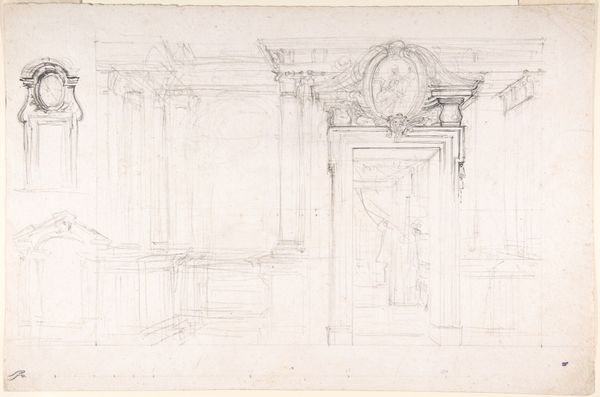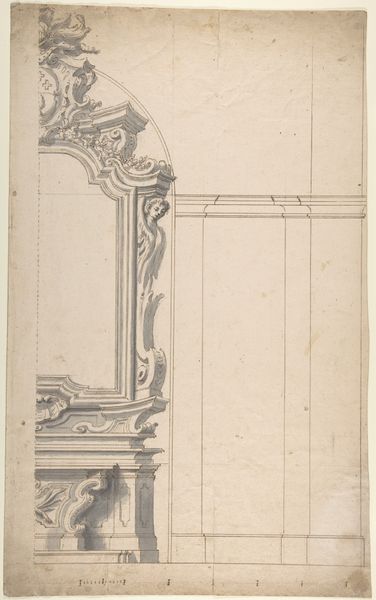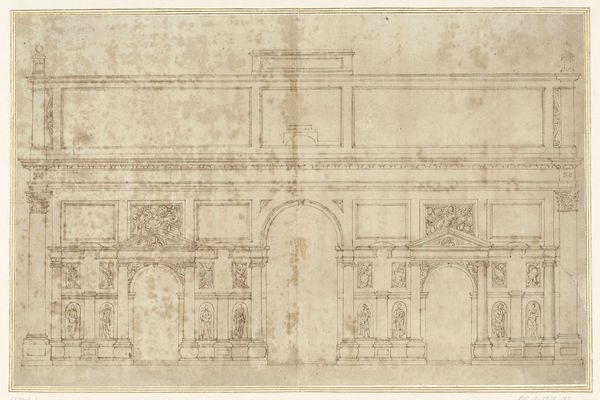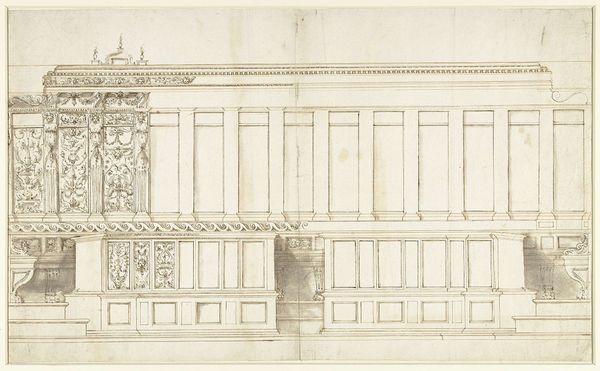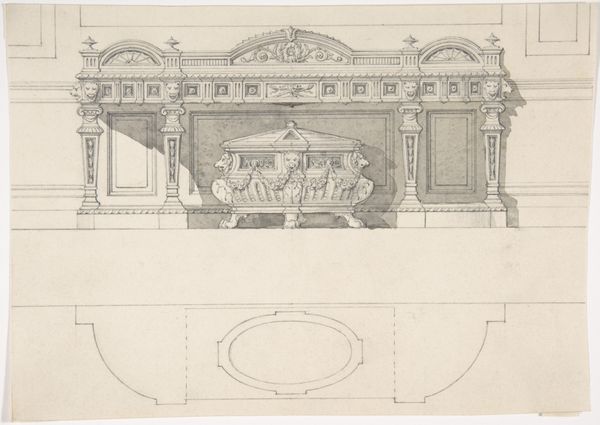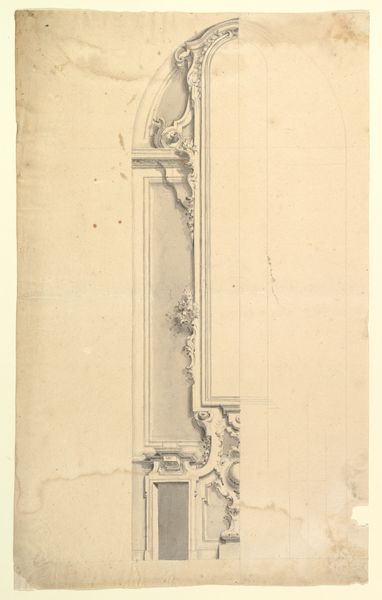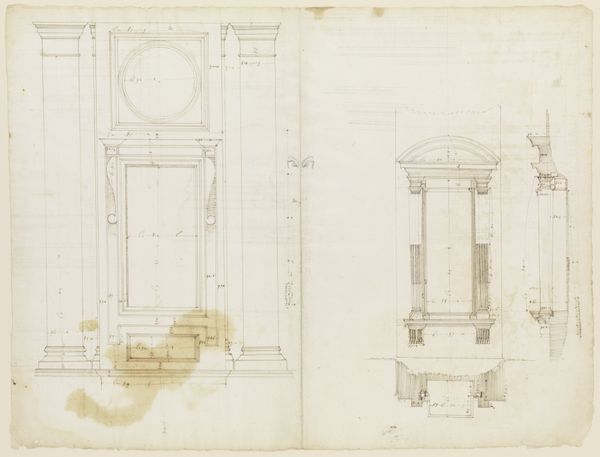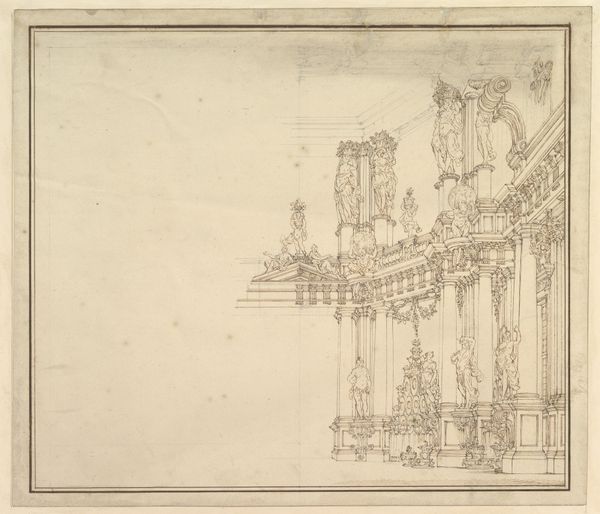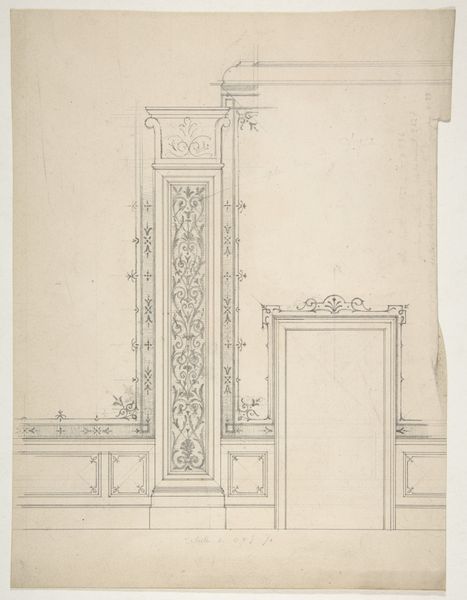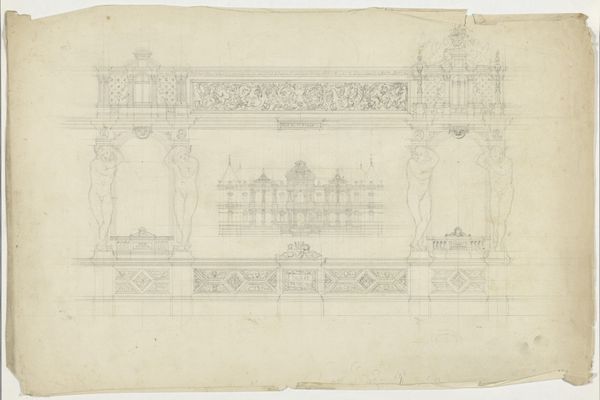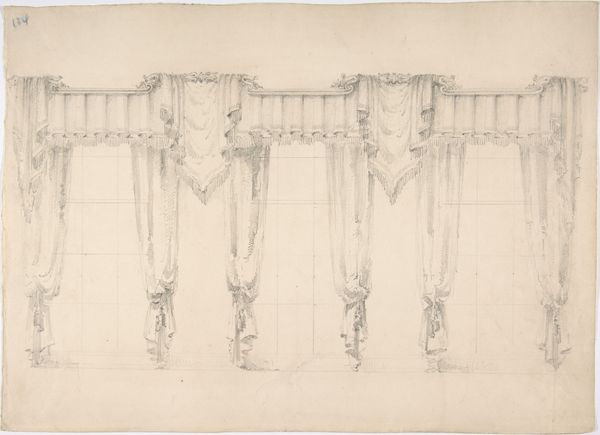
drawing, print, architecture
#
drawing
#
baroque
# print
#
geometric
#
architecture
Dimensions: 12-5/8 x 14-11/16 in. (32.1 x 37.3 cm)
Copyright: Public Domain
This is Luigi Vanvitelli’s “Design for an Altar,” a delicate sketch now held at the Metropolitan Museum of Art. Vanvitelli, who lived from 1700 to 1773, was working in a society deeply shaped by the power and aesthetics of the Catholic Church. The altar design provides us with a window into the intertwined nature of religious expression and social hierarchy. Altars were focal points, stages for the performance of faith, and powerful symbols of authority, usually accessible only to the clergy. With its elaborate ornamentation, this design speaks to the Baroque era's love of dramatic flair, and also hints at the way that the church used grandeur to assert its dominance. Consider the emotional intent, how the design encourages feelings of awe. The altar becomes a visual metaphor for the divine—distant, powerful, and ornate. Vanvitelli’s work doesn't merely represent faith; it actively constructs a narrative about power, access, and the emotional experience of religion in 18th-century society.
Comments
No comments
Be the first to comment and join the conversation on the ultimate creative platform.
